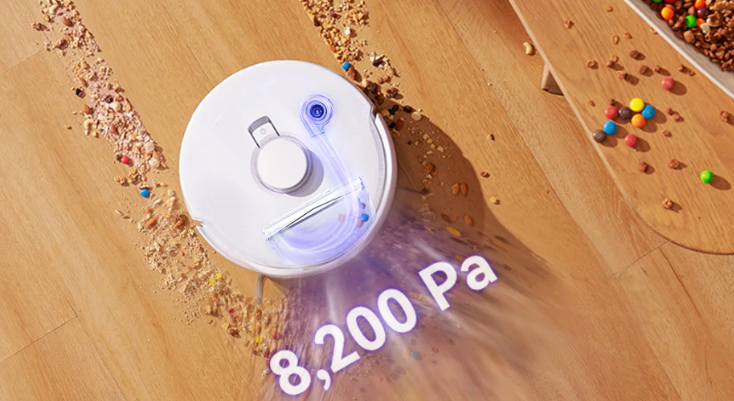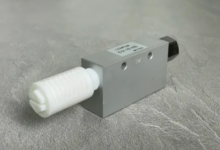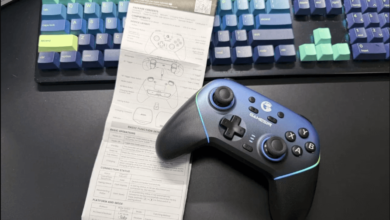Finding Peace Through Cleaning: A Mindful Approach to Your Routine

Embracing Mindful Cleaning
House cleaning is often seen as a chore, but it can be an opportunity for mindfulness and inner peace. Mindful cleaning involves being fully present and attentive, using all your senses to engage with the process. It transforms a routine chore into a moment of self-awareness. This practice is about more than just a clean home; it’s about nurturing well-being through the cleaning process itself.
Setting Intentions
Before you begin cleaning, take a moment to set your intention. Ask yourself why you are cleaning and what you hope to achieve. This can help you stay focused and present.
Centering Yourself
Begin with a few deep breaths to center yourself, inhaling slowly through your nose and exhaling through your mouth. This calms your mind and prepares you for a mindful cleaning experience.
Engaging Your Senses
As you clean, engage your senses. Pay attention to the feel of cleaning tools, the scent of products, the sounds of your movements, and the sights of your surroundings. By immersing yourself in the present moment, you can let go of worries and distractions.
Focusing on the Task
Concentrate on the task you’re performing. Whether you’re sweeping, wiping, give it your full attention. Notice the texture of the surface, the rhythm of your movements, and the satisfaction of completing each step.
Practicing Gratitude
While cleaning, express gratitude for your home and the comfort it provides. Recognize the privilege of having a safe and clean space. This can enhance your connection with your home and make cleaning feel more meaningful.
Letting Go of Attachments
As you clean, you may find items you no longer need. Use this opportunity to declutter and let go of attachments to material possessions. Acknowledge the impermanence of things and embrace the freedom that comes with simplifying your life.
Moving Mindfully
Pay attention to your body’s movements as you clean. Notice the sensations of stretching, bending, and reaching. Use these movements as a form of gentle exercise that promotes physical well-being.
Reflecting on the Experience
Once you’ve completed your cleaning, take a moment to reflect on the experience. How do you feel now compared to when you started? Acknowledge the sense of accomplishment and the peace that comes from a clean and organized space.
See also: English Sikho: Best Apps and Techniques to Improve Fluency
Zen Cleaning: Finding Stillness in Daily Tasks
Zen philosophy emphasizes finding stillness amidst everyday chaos through mindfulness meditation. Meditation, applicable to cleaning routines, turns attention to the present moment by focusing on breath, sensations, or a mantra. Mental health professionals often recommend both meditation and cleaning environments daily, because living in a cluttered space can reflect unhappiness.
Mindful cleaning can be transformative. The next time you’re tackling a tedious task, take your time and turn your attention inward.
Getting Started
- Choose your cleaning tool and notice the senses within your body and the environment. Feel the softness of your sponge, the grip of your mop.
- Bring your full attention to the present. Remind yourself that it’s not only the end result you’re after.
- A clean kitchen or bathroom may be the happy bi-product, but give your full presence to the act of cleaning.
- Remain present within yourself and focus on the repetitive motion of wiping, scrubbing, or sweeping.
- You can try to match the motion of your hands with the rhythm of your breath, syncing body and mind.
Finding a Mantra
- Find a mantra that works for you and repeat it as you clean: “I am present” or “I am grateful,” “I respect my body and my environment.”
- Play around with words and phrases that hold meaning for you.
- If we can be mindful while cleaning, we can be mindful and calm even in the most difficult of times and throughout our daily lives.
- Embrace the meaning and clarity in those moments of peace and happiness as well as the less glamorous moments spent doing everyday tasks.
- Be in your space, wherever you are: be there.
- Remember, that what’s past is past and the future is always uncertain. The moment you’re in may well be the only moment you have.
Mindful Simplicity: Decluttering and Leaving No Trace
Cleaning and decluttering are mindfulness practices. As you wipe a counter with a rag, notice the crumbs and dried spilled liquid. Feel the rag going over the bumpy surface, and gradually feel the surface smoothing out. Feel the tension in your shoulders and jaw, and relax them. Become aware of your breath as it comes in and goes out. Rinse the rag out carefully, cleaning it and watching the dirty water run down the drain. This is practice for a mindful life.
The Principles
- When you clean, just clean. Don’t plan, don’t have your mind on the next task as you’re doing the current task, don’t listen to a podcast or watch TV as you’re doing the task at hand. Just wipe. Just sweep. Just declutter. Just wash, just rinse.
- Do your work with gratitude and compassion. Before you start, remember to be grateful for what you have, for being able to clean or declutter. Be grateful for the people you have in your life, and remember why you’re grateful for them. Then remember you’re cleaning out of compassion: for the people in your life, so that their day might be a bit better for having a clean counter or sink, for yourself, so that you might have a nice uncluttered space in which to read a good book. This is your intention, and it will help you remember to be mindful.
- Pay attention to your thoughts, body, actions. Practice focusing your attention: on the rag, on the broom, on the dust. But also notice your thoughts: are you thinking about other things? Are you judging others? Are you wishing things were different? Are you angry? Don’t banish the thoughts, but notice them. Then return to the cleaning. Notice too as you clean your body, and your breathing. Notice everything about the moment, immerse yourself in the moment.
- Leave no trace. This means you don’t leave a mess, that you dispose of your waste properly, that you are respectful of other people in your space.
The Cleaning Guidelines
- Wash your bowl when you’re done with it. All other dishes too, of course.
- Clean as you go. If you’re chopping vegetables, clean up the cutting board and knife when you’re done, and put food scraps in the compost. Don’t pile things on the counters or in the sink.
- Have a place for everything. If something doesn’t have a place, designate one. Put things back in their place when you’re done.
- Start decluttering where you are. Overwhelmed by all that you need to declutter? Start right where you are, and pick a few things that you don’t need or use, and put them in a bag or box to be donated or recycled. You’ve now started. Tomorrow, do it again.
- Wipe your sink. Have the sink clean when you’re done with it. If it’s dirty, scrub it. There shouldn’t be dishes in the sink.
- Wipe the counters and stove. When you’re done preparing food, wipe things down. It just takes a minute.
- If a floor is dirty, take a minute to sweep it mindfully. It’s a nice break in your day.
- Handle knives with care.
- Swish the toilet bowl. Have a toilet brush near the toilet, and if you notice it even a little dirty after you use it, take the brush and give the bowl a quick swish and flush.
- Keep rags and scrubbers handy. I keep a scrub sponge in my bathroom to wipe down the toilet or shower when they get a little dirty. It only takes a minute, and having the scrubber there means I have no reason not to do it.
- Keep flat surfaces clear. My desk has nothing on it but my laptop and a photo of my wife. Counters and tabletops are clear. Floors have only furniture and rugs. These are not places for storing a bunch of junk. If you notice cluttered flat surfaces, clear them, one at a time. Get rid of the items, or give them a home.
- Take care of your tools as if they were your own eyes.
- Be gentle with those around you.
- You are already there. This is not a set of ideals to aspire to, a standard of perfection to achieve. This is a mindfulness practice, and if you are cleaning or decluttering mindfully, you have already arrived.
Creating a Mindful Cleaning Routine
To fully embrace cleaning as a meditative practice, consider incorporating the following elements into your routine:
- Set the Mood: Create a calming and serene environment by playing soothing music, lighting candles, or diffusing essential oils. These sensory elements can enhance your mindful experience.
- Breathe Deeply: Before starting your cleaning tasks, take a few deep breaths to center yourself and connect with your body. This simple practice can help you stay grounded and present throughout the cleaning process.
- Slow Down: Rather than rushing through your chores, consciously slow your movements and savour each step. This intentional pace can help you stay focused and mindful.
- Embrace the Process: Instead of fixating on the end result, find joy and satisfaction in the cleaning process itself. Appreciate the rhythmic motions, the scents, and the tactile sensations that come with each task.
- Express Gratitude: As you clean, take a moment to express gratitude for the items and spaces that bring joy and comfort to your life. This practice can cultivate a sense of appreciation and contentment.
The Benefits of Cleaning as Meditation
Incorporating mindful cleaning into your routine can yield numerous benefits for your physical and mental well-being:
- Stress Relief: The repetitive motions and focused attention required during cleaning can have a calming effect on the mind, allowing you to release tension and alleviate stress.
- Increased Productivity: By staying present and engaged, you can eliminate distractions and increase your efficiency, ultimately accomplishing more in less time.
- Mindfulness Practice: Cleaning provides an opportunity to cultivate mindfulness, allowing you to develop a greater awareness of your thoughts, emotions, and surroundings.
- Sense of Accomplishment: As you witness the transformation of your living space from cluttered to clean, a sense of pride and accomplishment can boost your self-esteem and overall well-being.
- Improved Mental Clarity: The act of decluttering and organizing can help declutter your mind, leading to increased focus and mental clarity.
Room-by-Room Zen Cleaning Guide
- Living Room: Start with decluttering, mindfully deciding what to keep, donate, or discard. Dust surfaces with slow, deliberate movements, paying attention to the feel of the cloth and the transformation of the space. Vacuum or sweep floors, focusing on the rhythm of the movement and the gradual improvement in cleanliness.
- Kitchen: Begin by clearing the counters and sink, expressing gratitude for the meals prepared in this space. Clean appliances mindfully, appreciating their role in nourishing you and your family. Mop the floor, imagining you’re washing away negative energy and inviting in positivity.
- Bathroom: Start with a deep breath, acknowledging this space’s role in self-care. Clean mirrors while practicing positive self-talk and affirmations. Scrub surfaces with intention, envisioning the removal of both physical and emotional clutter.
- Bedroom: Make the bed mindfully, setting an intention for restful sleep. Organize closets and drawers, practicing non-attachment to material possessions. Vacuum or sweep with slow, purposeful strokes, creating a clean slate for relaxation.
Eco-Friendly Product Recommendations
- All-Purpose Cleaner: A vinegar and water solution with essential oils for a natural, refreshing scent.
- Glass Cleaner: Equal parts water and white vinegar with a few drops of lemon juice.
- Floor Cleaner: Warm water with a small amount of castile soap and a few drops of tea tree oil for disinfecting properties.
- Bathroom Cleaner: Baking soda paste for scrubbing, followed by a vinegar spray for disinfecting.
- Air Freshener: Essential oil diffuser with calming scents like lavender or eucalyptus.
Incorporating Mindfulness into Daily Cleaning Routines
- Set a Daily Intention: Before starting your cleaning routine, set an intention for the day. This could be as simple as “I will clean with gratitude” or “I will create a peaceful space.”
- Practice the “One Minute Rule”: If a task takes less than a minute to complete, do it immediately. This prevents small tasks from piling up and becoming overwhelming.
- Create a Cleaning Ritual: Develop a short ritual to mark the beginning and end of your cleaning session. This could involve lighting a candle, playing calming music, or taking a few deep breaths.
- Use Cleaning as a Mindfulness Bell: Let certain cleaning tasks serve as reminders to check in with yourself. For example, every time you wash dishes, use it as a cue to assess your current emotional state.
- End with Reflection: After cleaning, take a moment to appreciate your efforts and the improved state of your space. This reinforces the positive aspects of cleaning and encourages consistency.
Mop Vacuum Combo
For those seeking to integrate advanced technology with mindful cleaning, robot vacuum and mops offer an efficient solution. This appliance combines sweeping, vacuuming, and mopping into a single, streamlined process, allowing you to maintain a clean floor while still practicing mindfulness during the cleaning routine.
Conclusion
Mindful cleaning is a transformative practice that invites us to embrace the beauty and serenity in the seemingly ordinary tasks of daily life. By cultivating mindfulness and presence during our chores, we can transform mundane activities into rituals that nourish our souls and deepen our connection with ourselves and our surroundings. Embark on this mindful journey, and you may discover that the act of cleaning is not merely a means to an end but a pathway to self-discovery, inner peace, and a profound appreciation for the present moment.






